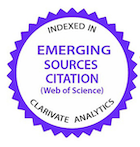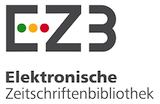ANATOMIC STUDY OF ARTERIES OF SHOULDER Cebus libidinosus (RYLANDS, 2000; PRIMATES - CEBIDAE
Abstract
The researches in Cebus libidinosus has been reali¬zed because less known about your morphophisiology and its expressive psychomotor development comparative with Old World primates. The shoulder regions deserve special attention because behavior paste and objects manipulations. Twenty four Cebus specimens were donated by the “Bra¬zilian Institute for Environment and Recyclable Natural Resources” (IBAMA), from Sete Lagoas, MG, Brazil, and sacrificed according to recommendations of the “Brazilian College of Animal Experimentation” (COBEA), keeper in University Federal of Goiás and University Federal of Uberlândia. The arteries system these animals were injected with latex colored and afterward the arteries were dissected on stereoscopic microscopy. In large majority, number and distribution of arteries of Cebus are similar for humans, others primates and domestics animals, but the frequency and origin are different. In general terms the arteries of shoulders of Cebus monkey origin of common trunk of axilar arteries and no individual branches, differently in others animals studied, in the specific terms, ocurred variations in all structures study in the relationship others studed primates. KEY-WORDS: Anatomy, arteries,Cebus libidinosus, primates.Downloads
Download data is not yet available.
Downloads
Published
2007-07-05
How to Cite
AVERSI-FERREIRA, Tales Alexandre; PEREIRA-DE-PAULA, Jarbas; LIMA-E-SILVA, Mário de Souza; PRADO, Yandra Cássia Lobato do; SILVA, Zenon. ANATOMIC STUDY OF ARTERIES OF SHOULDER Cebus libidinosus (RYLANDS, 2000; PRIMATES - CEBIDAE. Brazilian Animal Science/ Ciência Animal Brasileira, Goiânia, v. 8, n. 2, p. 273–284, 2007. Disponível em: https://revistas.ufg.br/vet/article/view/1352. Acesso em: 19 dec. 2025.
Issue
Section
Veterinary Medicine
License
Copyright (c) 2007 Brazilian Animal Science/ Ciência Animal Brasileira

This work is licensed under a Creative Commons Attribution 4.0 International License.
Authors who publish with this journal agree to the following terms:
- Authors retain copyright and grant the journal right of first publication with the work simultaneously licensed under a Creative Commons Attribution License that allows others to share the work with an acknowledgement of the work's authorship and initial publication in this journal.
- Authors are able to enter into separate, additional contractual arrangements for the non-exclusive distribution of the journal's published version of the work (e.g., post it to an institutional repository or publish it in a book), with an acknowledgement of its initial publication in this journal.
- Authors are permitted and encouraged to post their work online (e.g. in institutional repositories or on their website) prior to and during the submission process, as it can lead to productive exchanges, as well as earlier and greater citation of published work (See The Effect of Open Access).



























